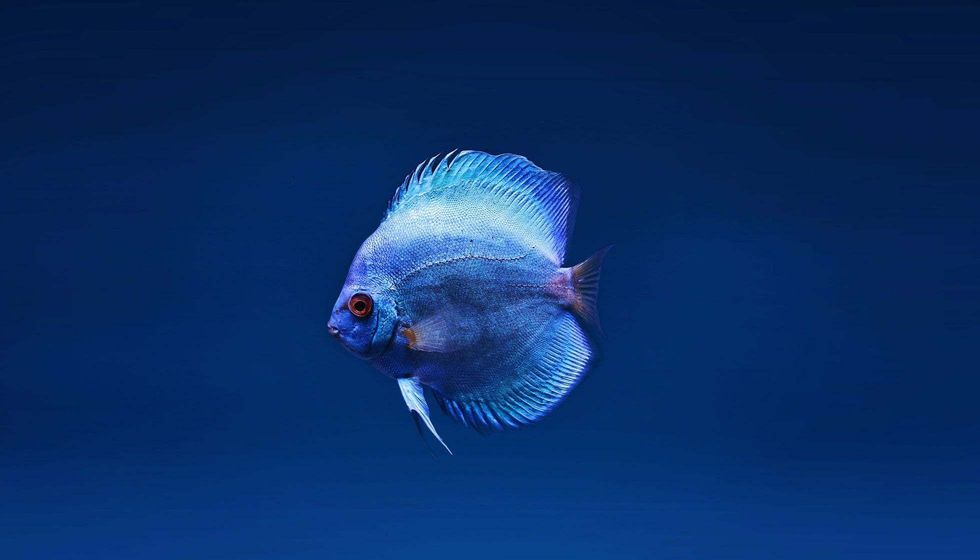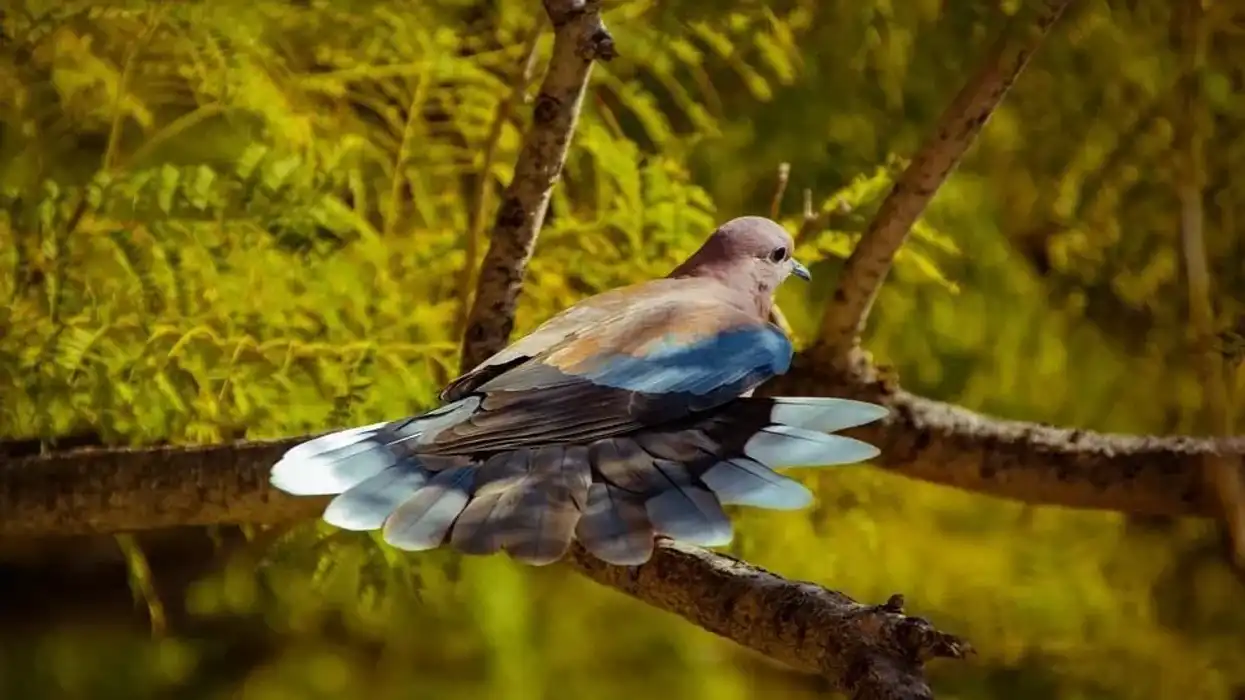The discus is a member of the cichlid family and a genus of brightly colored tropical fish. It lives in the waterways of the Amazon basin.
Thanks to its intricate markings and vivid colors, it is among the most commonly used tropical aquarium fishes in the world. In fact, it has been selectively bred in captivity for its exotic patterns and markings, some of which don’t even exist in its natural form.
The discus fish has a compressed, disk-shaped body. Its three species, S. aequifasciata, S. tarzoo, and S. discus occur in the tributaries of South America’s Amazon river.
They also have an unusual prenatal care form where the adult secretes a mucus-like substance on their skin that the young takes in as nourishment. Reports indicate that both males and females take care of the young and take turns nursing the babies.
It is difficult to keep the discus fish in the aquarium because they have strict water quality requirements without which they won’t be alive. However, because of their wavy markings, aquarium hobbyists persist in breeding and raising them and spend a lot of money on maintaining them.
If you liked these facts about the discus, then you'll surely like these facts about blobfish and lungfish too!
Discus Interesting Facts
What type of animal is a discus?
A discus is a type of fish.
What class of animal does a discus belong to?
The Discus belongs to the class of Actinopterygii or Ray-finned fishes.
How many discus are there in the world?
There is no definite number of discus in the world.
Where does a discus live?
The discus fishes are known to inhabit the floodplain rivers and lakes of the lowland Amazon basin. They are a part of the diverse Neotropical fish fauna.
The S. aequifasciatus occurs in clear water while the S. tarzoo can be found in white and black water. The S. discus prefers blackwater habitats, but occasionally, they can be found in the white water.
Since the discus prefers a lentic habitat like flooded forests and floodplains, the white water used by the discus for habitation contains little suspended material.
What is a discus' habitat?
A discus lives in a floodplain habitat that is right on river terraces and is subject to regular flooding.
Who does the discus live with?
Discus prefers to live in pairs.
How long does a discus live?
The average lifespan for a discus is 10 years, but they can live for about 15 years.
How do they reproduce?
The female discus fishes reach sexual maturity at the age of 12 months while the males can take a couple of more months to mature. When the discus spawn, they start by laying a few eggs at the site prepared for breeding.
Then, the male will immediately fertilize them after they are deposited. As it progresses, the female will start depositing a large group of eggs and will guard the spawning site while the male discus fish fertilizes the egg.
Once the spawning has ended, the fish guards their eggs and fans the water using their fins in order to prevent the fungus growth.
After spawning, the eggs take between 50 to 60 hours to hatch. The fry takes a couple of days to develop and then becomes free-swimming.
What is their conservation status?
The conservation status of a discus fish is Near Threatened.
Discus Fun Facts
What does a discus look like?

The name of the discus comes from the fact that it looks like one. It has a relatively rounded and flat body and big prominent fins on its pelvis and back.
The discus fish is classified as per their body colors - red, green, and blue. They have so many different patterns, that it won’t be possible to describe them. Also, they have the ability to change their colors on the basis of their age, mood, stress levels, and environmental conditions.
This species is not larger than 6 in (15.2 cm) in the wild. However, there are certain reports of captive fishes that can grow to 9 in (22.9 cm). It is difficult to tell the male apart from the females, except during the breeding season when the female has an enlarged abdomen.
How cute are they?
The discus with its colorful body and unique patterns is definitely an attractive fish.
How do they communicate?
Discus communicates to other individuals through the vertical stripes present on their sides. These stripes are also used for camouflaging them with aquatic plants.
How big is a discus?
A discus can reach the 4.8–6 in (12.2– 15.2 cm). There have been some captives that have reached the length of 9 in (22.9 cm).
How fast can a discus swim?
There is insufficient data available on how fast a discus can swim.
How much does a discus weigh?
The average weight of a discus fish can be somewhere between 0.3-0.6 lb (150– 250 g).
What are the male and female names of the species?
The male and female discus do not have specific names.
What would you call a baby discus?
There is no specific name for a baby discus.
What do they eat?
A majority portion of the discus’ diet includes algae and small plant material. They often supplement their diet with small invertebrates like crustaceans and worms.
Are they dangerous?
Discus fish are generally calm and peaceful. Even though they don’t pose any threat to you, they can be quite aggressive towards other discus fishes, especially while trying to pair off.
Would they make a good pet?
Even though it is a bit difficult to maintain the discus fish, they make a good pet. Discus fish for sale are expensive because their breeding and keeping involve the most labor-intensive practices of fish keeping.
Did you know…
That if you are getting a discus as a pet, you should have them in a small group where at least 4 to 6 of them live together. Discus lives in a shoal in the wild.
However, since they have a peaceful nature, they can be put in an aquarium with other fishes like cardinalfish, cleaner fish, or neon tetra.
The only thing that you have to take care of is to get a tank that is large enough for accommodating them all. Please note that a discus fish can grow to up to 20 cm in length, so your aquarium should be spacious enough for them to swim around.
Also, the discus is known to have an internal organization that is regulated by a hierarchy. The leader, male or female, is the one with the brightest colors and no vertical black bands.
Also, they occupy the central part of the aquarium.
If there are any clashes among the males over a female, both of them position themselves in front of one another and use their mouths for taking hold of each other. Then, they begin something like a wrestling match that lasts until one of them lets go and surrenders.
Do people eat discus?
The discus is very rarely caught for its meat. Even though it is eaten in a few places, it is not that desired. Also, it is isolated and difficult to reach. But, the discus fishes are raised in artificial environments for selling them on the market.
Are discus really that hard to keep?
Discus inhabit the rivers of the Amazon forest, in areas with scarce vegetation, particularly still water, and a fairly high water temperature. If you want to keep them as a pet, you will have to recreate a habitat that is as close to this one as possible in order to take proper discus fish care.
The discus requires a large aquarium that must have basic decor.
It should be big enough to provide enough space for the fish to move around.
Therefore, it is best that you focus on tanks that have a minimum capacity of at least 200 liters.
Also, you will have to keep the water at a temperature between 28 and 30° C. Even though high temperatures do not work well for vegetation, it is important to have plants to provide a positive element in the aquarium’s equilibrium.
The best way to compromise is to add floating plants like water lilies to the discus tank that not only act as a light filter but also provide good oxygenation to the water at the same time.
Discus fish don’t like to live in an aquarium that is too bright and are also very sensitive to environmental stress. So, it is crucial to place the aquarium in a place that is not next to lamps or exposed to sunlight.
Here at Kidadl, we have carefully created lots of interesting family-friendly animal facts for everyone to discover! For more relatable content, check out these codfish facts and yellow tang facts for kids.
You can even occupy yourself at home by coloring in one of our free printable discus coloring pages.









